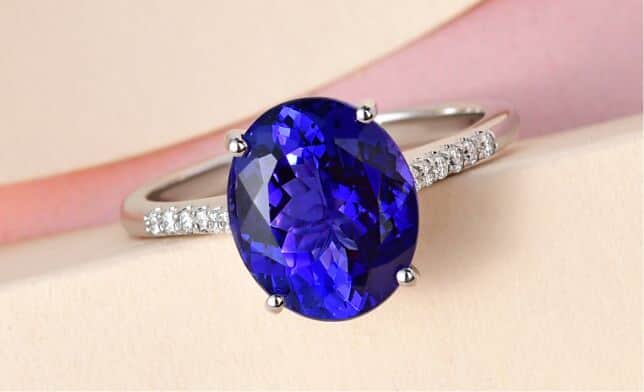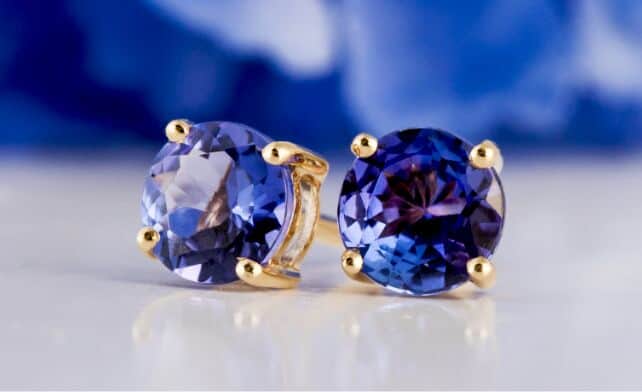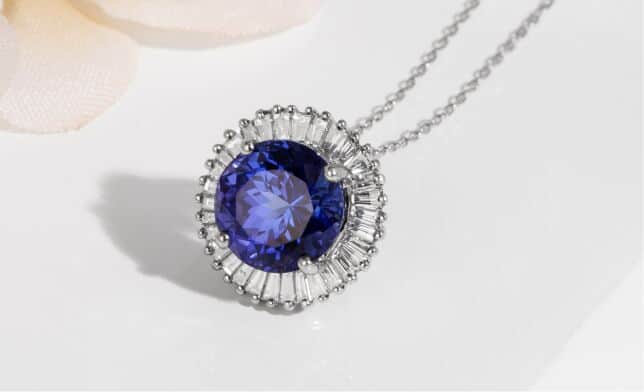Tanzanite, a beautiful bluish-violet zoisite gemstone, is among the rarest gems on Earth and was discovered by chance. Its color transitions from blue to violet when viewed from different angles. Learn about tanzanite’s properties, origin, value, and more.
TANZANITE GEMSTONES
Tanzanite: Fast Facts
What is Tanzanite?
What color is Tanzanite?
How valuable is Tanzanite?
Tanzanite Varieties
Treating Tanzanite
Tanzanite Care
Where Does Tanzanite Come From?
How Is Tanzanite Mined?
Properties of Tanzanite
Who Can Wear Tanzanite?
How Does Tanzanite Compare to Other Stones?
Tanzanite in Jewelry Design
How to Authenticate Tanzanite
Frequently Asked Questions
- Can tanzanite be worn in everyday jewelry, or is it better suited for special occasions?
- Can tanzanite change color over time or with exposure to light?
- Can tanzanite be passed down as an heirloom?
- Can tanzanite be found in jewelry pieces other than rings and earrings?
- What distinguishes an emerald-cut tanzanite from other cuts?
- Are tanzanite and ruby crystals similar?
- What should I look for when buying tanzanite online?
Tanzanite: Fast Facts
Tanzanite ranks from 6.0 to 7.0 on the Mohs hardness scale.
The best tanzanite displays a transition of color from blue to violet, with flashes of red.
Tanzanite originates in Tanzania, first found in the Merelani Hills near Mount Kilimanjaro.
Tanzanite universally undergoes heating to improve its color.
Tanzanite is the blue-to-violet variety of the zoisite mineral structure. Sometimes, it’s known in green or pink varieties, but these specimens are rare.
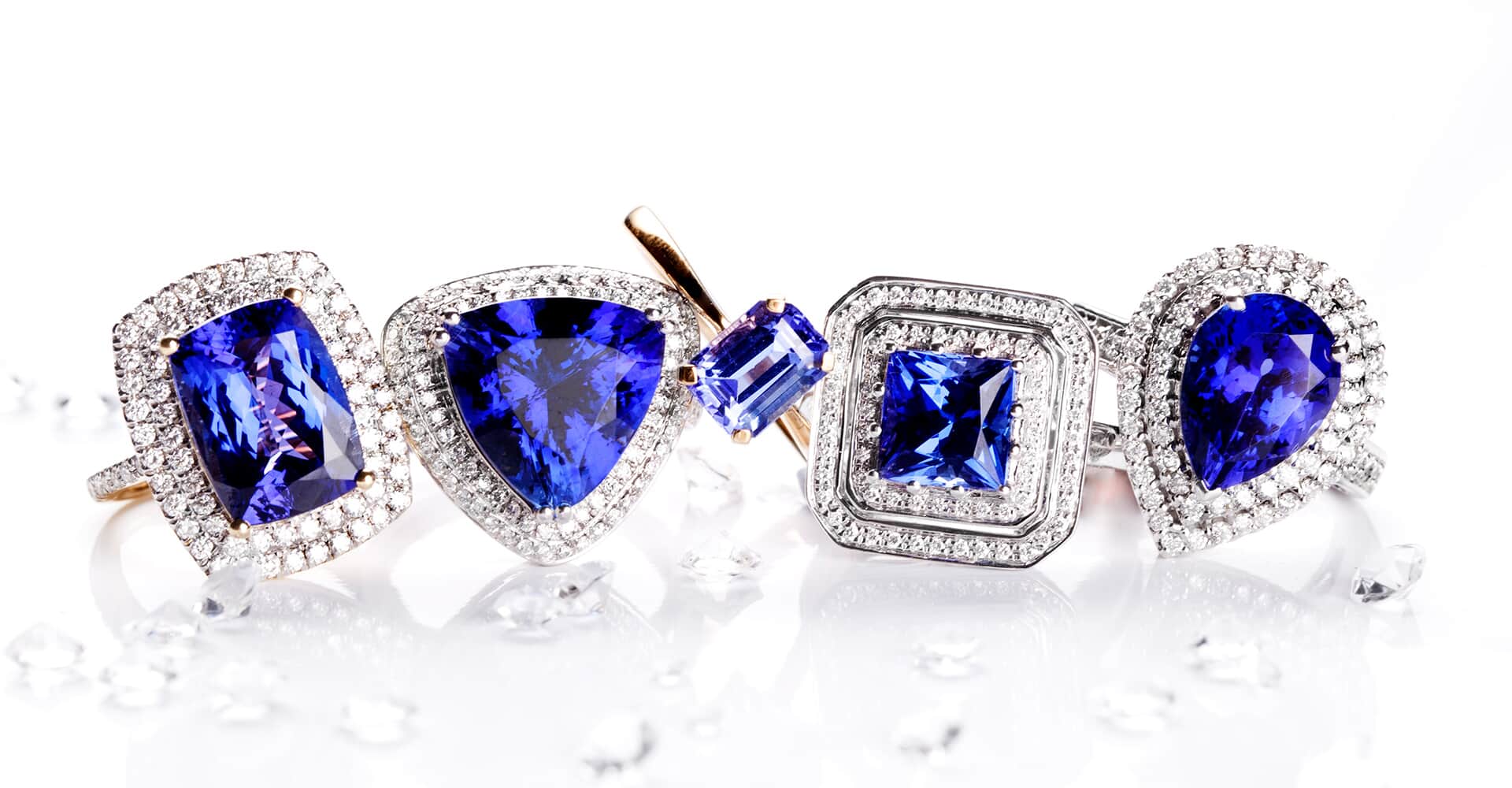
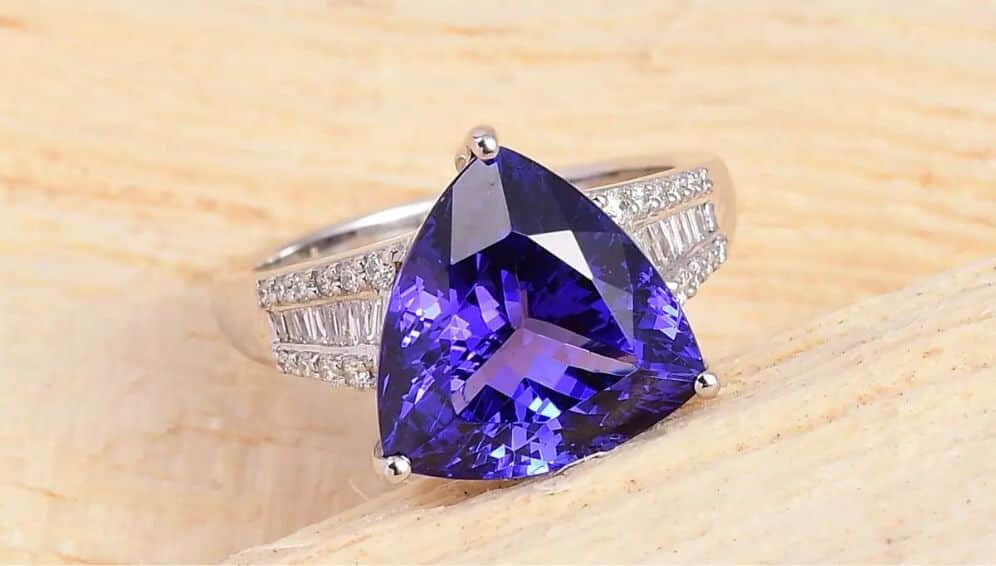
What is Tanzanite?
Tanzanite is a bluish-violet gemstone found exclusively in Tanzania's Merelani Foothills. Initially mistaken for a new deposit of sapphire by a Maasai Tribesman in the late 1960s, these crystals were soon identified as a novel zoisite variant. It is named in tribute to its Tanzanian roots, and it surpasses diamonds in scarcity by a thousandfold, which is one reason it is known as the “Gemstone of a Generation” or the “Gemstone of the 20th Century”.
What color is Tanzanite?
Tanzanite is the bluish-violet variety of the mineral zoisite. The gem exhibits pleochroism, meaning that the color of the gemstone shifts as you change its position. This creates a huge challenge for gem cutters, as a compromise always exists between getting the best color out of the gem while keeping it a desirable size.

How valuable is Tanzanite?
Like other colored stones, the value of tanzanite hinges on four crucial factors: color, clarity, cut, and carat weight. The following guidelines will help in choosing tanzanite stones for your collection.
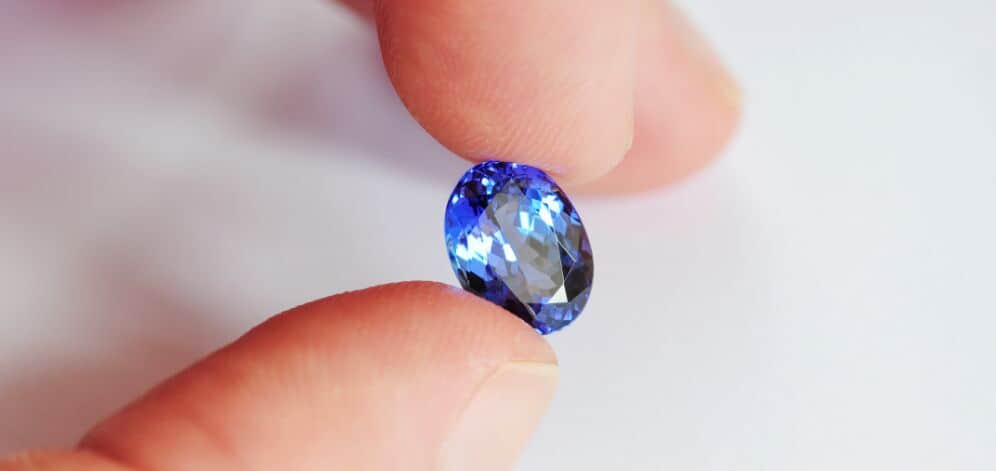
Color
The ideal color for tanzanite is exemplified by ‘AAAA’ tanzanite jewelry in the Rhapsody and Iliana collections. Meanwhile, ‘AAA’ represents some of the best value in colored gemstones. For anyone wishing to own an excellent example of a tanzanite gem, ‘AAA’ is the most accessible option.
Much of the tanzanite jewelry you’ll find at Shop LC is ‘AA’ grade. Very affordable, AA-grade tanzanite is best for those who enjoy dabbling in gem collecting. ‘A’ grade tanzanite represents the majority of tanzanite on the market today. This grade of gem is frequently used as accent stones in all types of jewelry.
Understanding these variations is essential when evaluating the quality and value of a tanzanite gemstone. The table below provides an overview of the tanzanite color grades and their distribution in the market:
| Grade | Color Description | Percentage of Tanzanite in Market |
|---|---|---|
| AAAA | Intensely saturated violetish-blue color with red flashes | <1% |
| AAA | Beautiful blue and violet colors with bright burgundy flashes | 5% |
| AA | Blue to violet colors with reduced vibrancy | 20%-30% |
| A | Light lavender blue with minimal color variation | 50%-75% |
Clarity
Premium tanzanite is predominantly eye-clean. This means that any inclusions are only viewable under ten times magnification, such as with a jeweler’s loupe. Any inclusions visible to the unaided eye can reduce the value of the stone, particularly in lighter-colored stones. As a naturally occurring stone, inclusions within tanzanite can be expected, though careful cutting reduces most of these clarity characteristics into ones that require magnification to see.
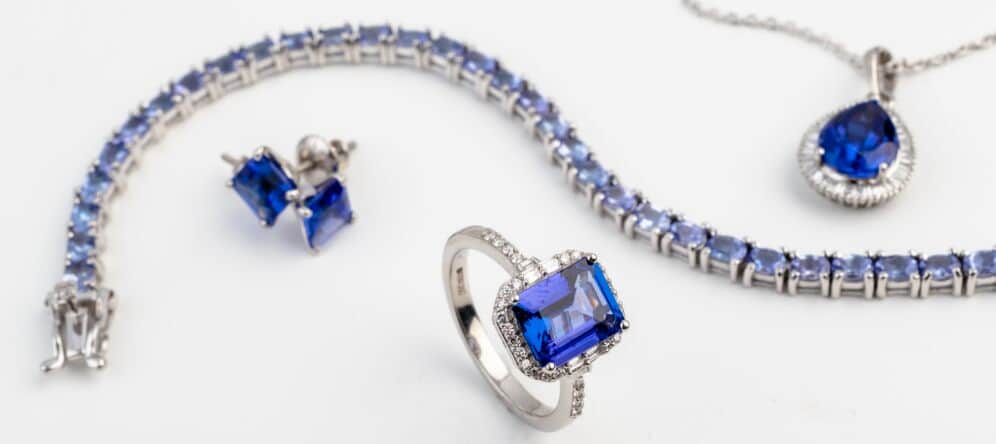
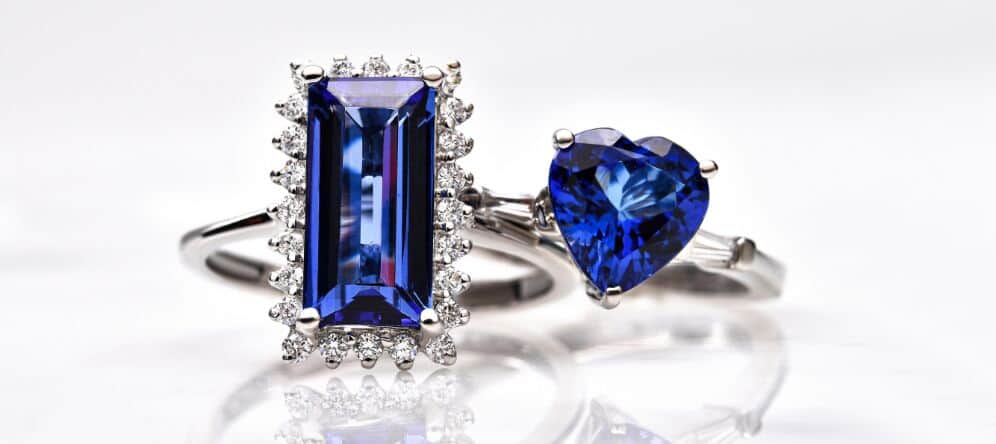
Cut
Cutting a tanzanite crystal is a balancing act between preserving the gem's weight and enhancing its optical appeal, like color and clarity. In addition, a lapidary must consider the pleochroic nature of tanzanite. With its range of colors, many question whether violet or blue tanzanite is more common. Due to the structure of the stone, cutting tanzanite to bring out its violet color typically means a larger stone. Violet-blue gemstones are common, and gems presenting a predominantly blue hue are the rarest of all.
Carat
Tanzanite gems occur in a wide range of sizes, meaning there’s something for everyone when choosing this stone. In tanzanite, like other gemstones, the size of the finished jewel has an impact on its saturation of color. Fine tanzanite, with the absolute best color, are typically found in sizes over five carats. They are the most likely to display the coveted blue-violet color and pleochroism that creates its famous flashes of red. However, beautiful gems are available across all sizes, ensuring a match for every taste and budget.
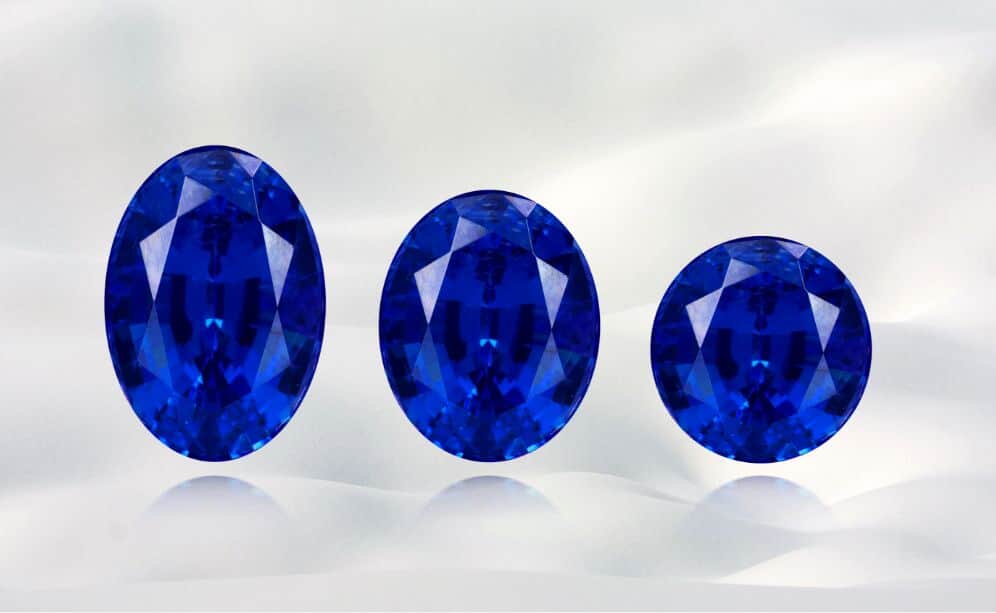
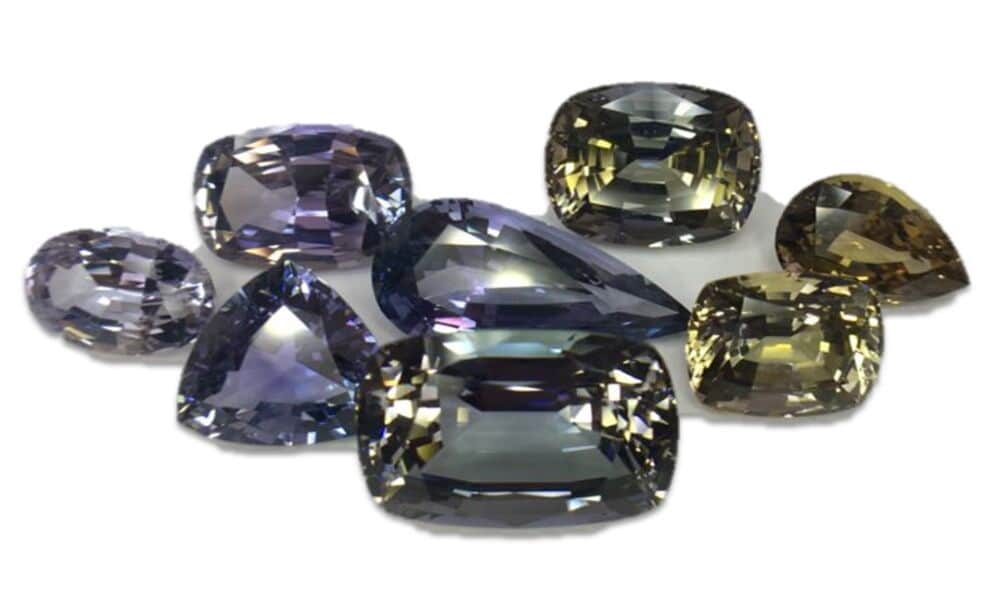
Tanzanite Varieties
While most of us are familiar with the traditional blue-violet variety of tanzanite, there are actually several zoisite gems that are also considered tanzanite:
• Bondi Blue Tanzanite: Named after the sea-blue color seen on the beautiful Bondi Beach in Australia, Bondi Blue Tanzanite displays deep blues tinged with rich greens
• Natural Green Tanzanite: Similar in color to green tourmaline, Natural Green Tanzanite has a green base color with red-violet and blue undertones.
• Peacock Tanzanite: Peacock Tanzanite represents features transition between cheerful green and bright blue hues, mimicking the shimmer of the male Indian peafowl.
Pink tanzanite is an exceptionally rare phenomenon, occurring in less than 1% of tanzanite gemstones. Its rarity and unique coloration make it a highly sought-after piece.
Treating Tanzanite
Gemstone treatments are frequently used to enhance the appearance or durability of a gemstone. Some are so common that it’s often assumed that treatment is always performed.
Tanzanite is no exception; these gems are routinely heated to accentuate their coveted blues and violets, a process integral to their allure. Heat treatment is standard for tanzanite and doesn't affect its value, contrary to what one might assume.
Tales of discovery often speak of blue tanzanite crystals found by prospectors or tribesmen. It's believed these stones underwent natural heat treatment, either from natural radiation beneath the earth or from events like wildfires, long before being unearthed.
Untreated tanzanite typically showcases a brownish-green or solely green hue. On rare occasions, pink varieties emerge, adding to the gemstone's intriguing palette.
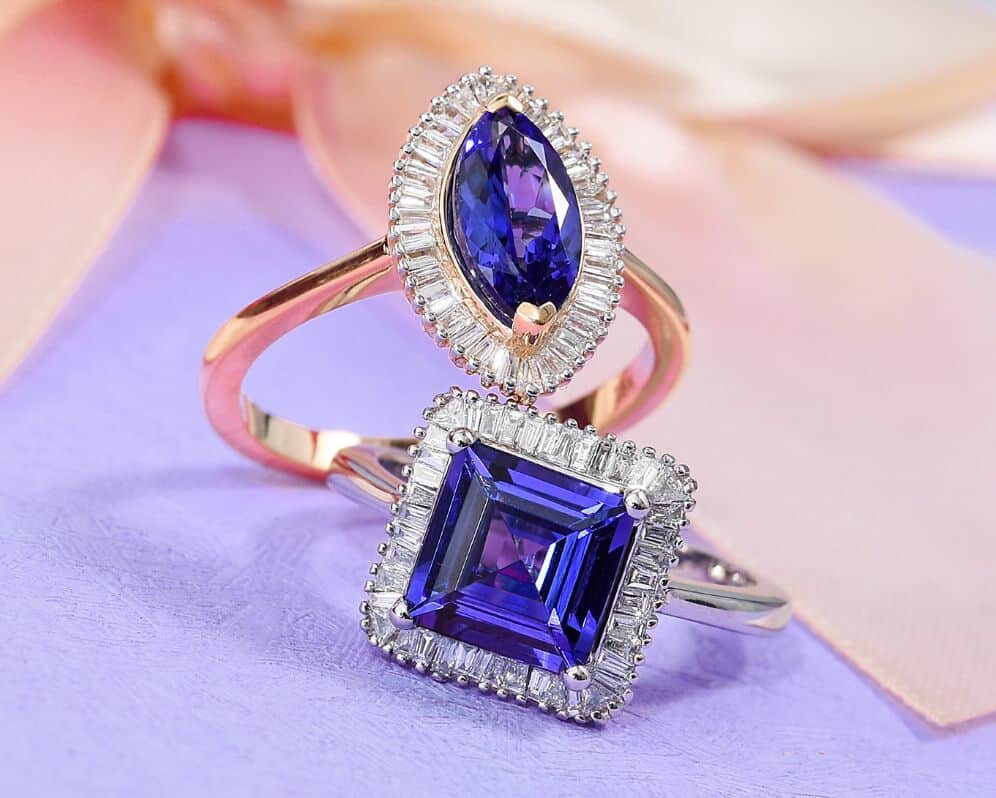
Jewelers and gem sellers are required to disclose any treatments to tanzanite or any gemstone. This transparency ensures buyers are fully informed about the nature and value of their purchase..
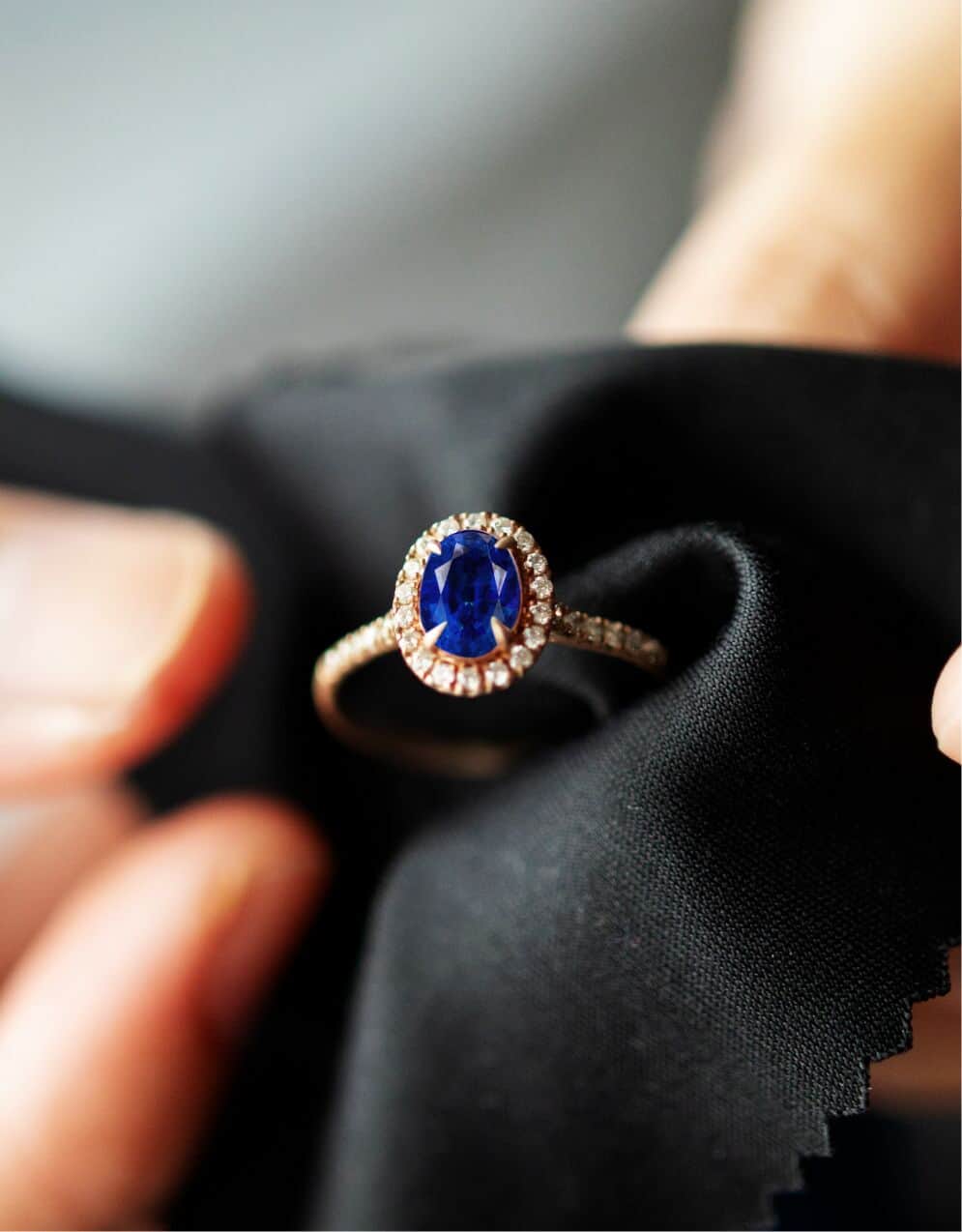
Tanzanite Care
Tanzanite is rated 6.0 to 7.0 on the Mohs hardness scale, meaning that it is relatively durable. However, it can cleave if struck. For an active person wearing tanzanite daily, a pendant or earrings may be a better choice than a ring.
Proper care ensures that your tanzanite crystal remains as captivating as the day you received it. Here are more essential tips you should consider:
Cleaning
To clean tanzanite safely, use a mild detergent solution diluted in warm water. Gently scrub the gemstone with a soft-bristled brush, such as a toothbrush, to remove any dirt or residue. Avoid harsh chemicals or abrasive cleaners, as they can damage the gemstone's surface and affect its clarity and color. After cleaning, rinse the tanzanite thoroughly under running water and pat it dry with a soft, lint-free cloth.
Storage
Store each piece separately in a soft pouch or lined jewelry box to prevent scratches and abrasions. Avoid storing tanzanite with other gemstones or metal jewelry that may scratch its surface. Keep tanzanite away from direct sunlight and extreme temperatures, as prolonged exposure can cause fading and thermal shock, which can cause the stone to fracture.
Preventive Care Measures
Remove your tanzanite pieces before engaging in activities that may subject them to impact or abrasion, such as sports or household chores. Avoid exposing tanzanite jewelry to harsh chemicals, including household cleaners, hairspray, and perfume, as they can corrode the metal settings and affect the gemstone's appearance. Schedule regular inspections with a professional jeweler to check for loose settings or signs of damage and ensure timely repairs if needed.
Where Does Tanzanite Come From?
Tanzanite's journey begins in Tanzania, named to avoid the less appealing moniker “blue zoisite,” which bore an unfortunate resemblance to “blue suicide.” This decision paved the way for its recognition as tanzanite in honor of the country in which it was discovered.
While specific discovery tales are varied, tanzanite was unearthed in the 1960s. Many narratives acknowledge the Maasai of the Merelani Foothills, near Mt. Kilimanjaro, as early witnesses to the gem's allure.
The Tanzanian government recognizes Jumanne Ngoma as the man who discovered tanzanite. In the mid-1980s, Ngoma would receive two certificates legitimizing his discovery of the gem. In April 2018, the Tanzanian government bestowed a large reward to Ngoma to help care for him in his retirement. The Tanzanian government considers Jumanne Nogma to be a national treasure for his discovery of the stone.
However, another story credits Manuel de Souza, who discovered the stone by accident. De Souza was attempting to prospect further inland for gems, but poor road conditions meant his driver wouldn’t take him the full distance he intended to travel. Instead, de Souza began to explore around the village of Mtakuja, where the driver had left him and his crew. Souza was said to have found the first tanzanite crystals there. This story has gained strong support and momentum because of the mountains of evidence supporting it. Not only was de Souza’s discovery covered in major periodicals of the time, but many prominent figures within the gem trade have backed his claims in countless anecdotes, articles, and reports.
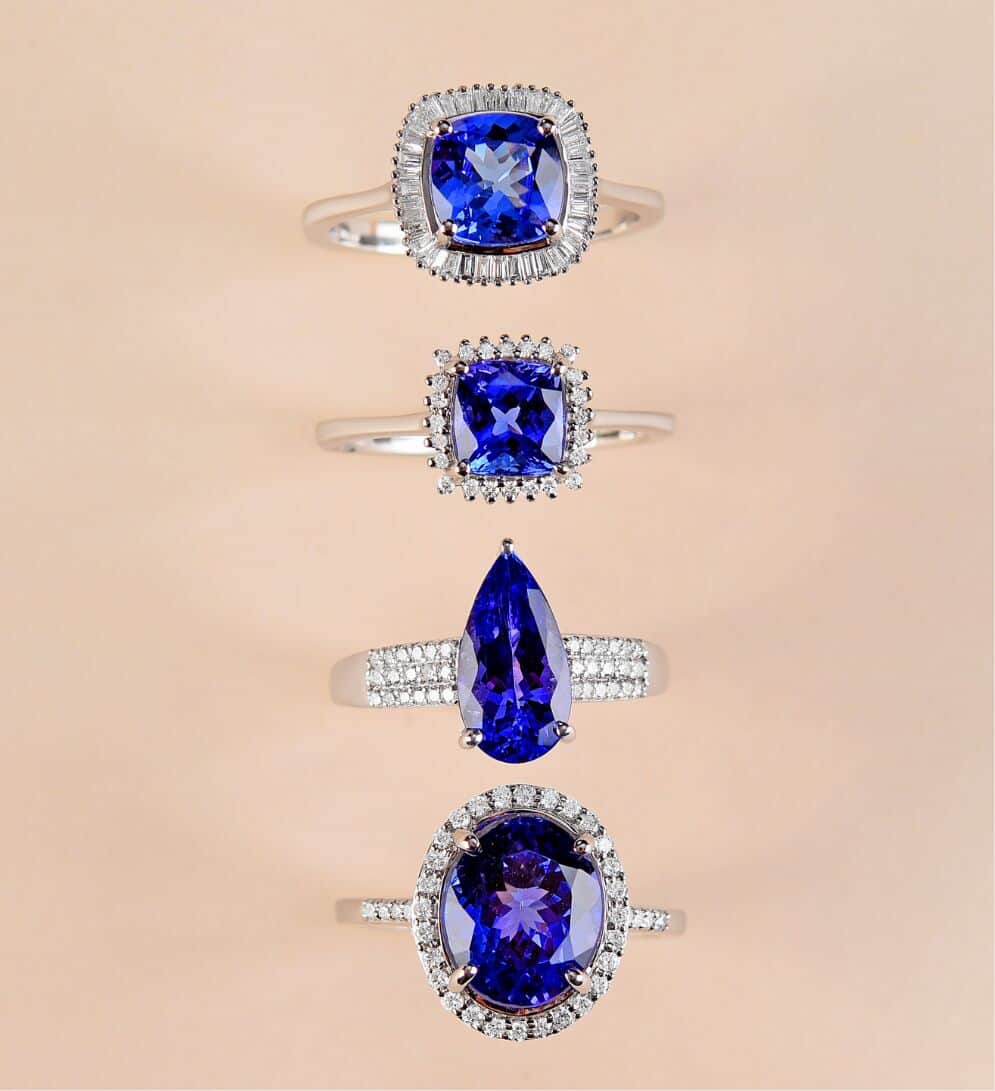
Tanzanite is estimated to be depleted from its only source in Tanzania within the next decade or so, making it an increasingly valuable investment for gem collectors and enthusiasts.
How Is Tanzanite Mined?
Following tanzanite's discovery, the rush of miners and treasure seekers in the tanzanite mines led the government to organize the area into four blocks, labeled ‘A’ to ‘D,’ a system that remains today. Shop LC sources its tanzanite from Block C, partnering with TanzaniteOne Ltd, the largest producer of tanzanite.
As a top Sight Holder, Shop LC's substantial purchases enable a steady supply at low costs for consumers and the assurance of an ethical supply chain, giving peace of mind to rare gem collectors. The collaboration also supports the Tanzanite Foundation, which aids the Tanzanian community through educational and infrastructural services.
Block C is the largest of the Blocks physically and also produces the highest yield. Mining for tanzanite continues to rely on hand tools and traditional techniques, but Block C also benefits from modern technology, enabling more efficient, safer, and reliable extraction of tanzanite gemstones.
Block C, the largest and most productive, combines traditional mining techniques with modern technology for better efficiency and safety. Mines reach depths of over 2600 feet, with geological surveys suggesting even deeper reserves. However, deeper mining poses safety challenges and may impact future operations.
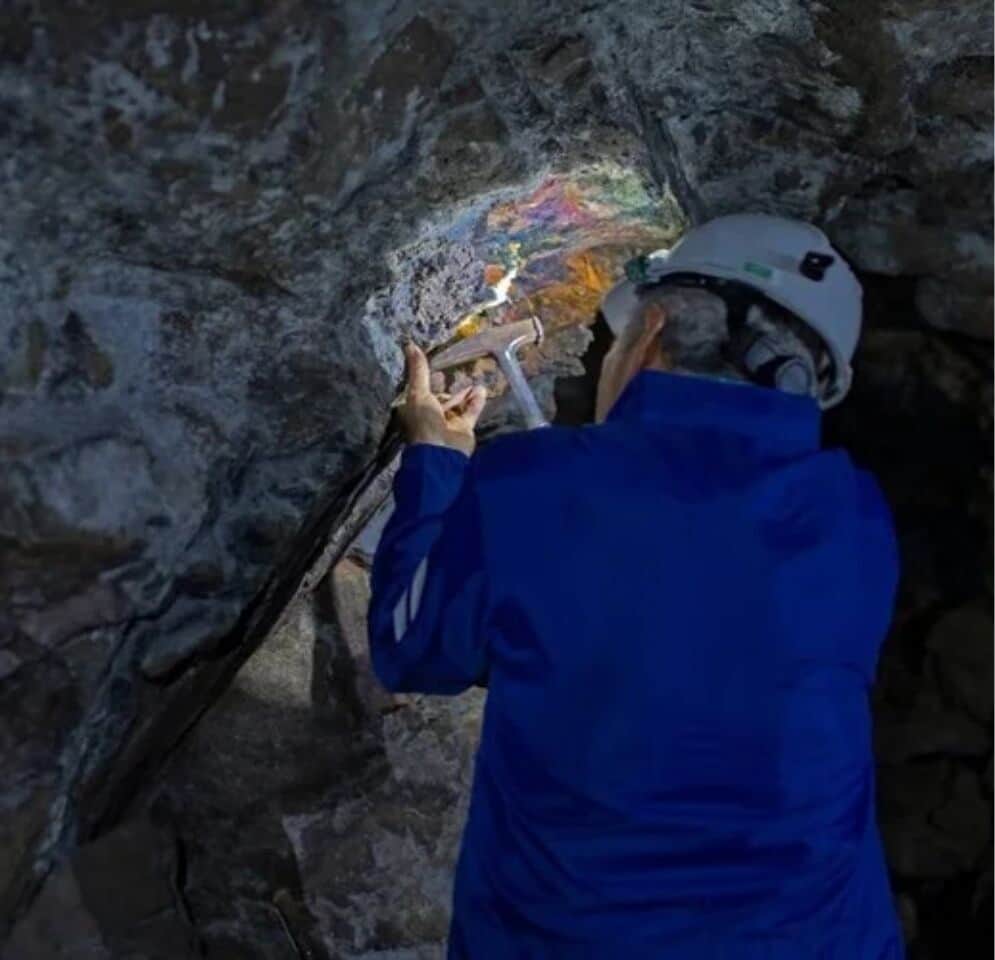
In 2018, to combat smuggling and ensure proper taxation, the Tanzanian government built a wall around the mining area. This security measure aims to protect the tanzanite supply and ensure the gemstone's longevity.
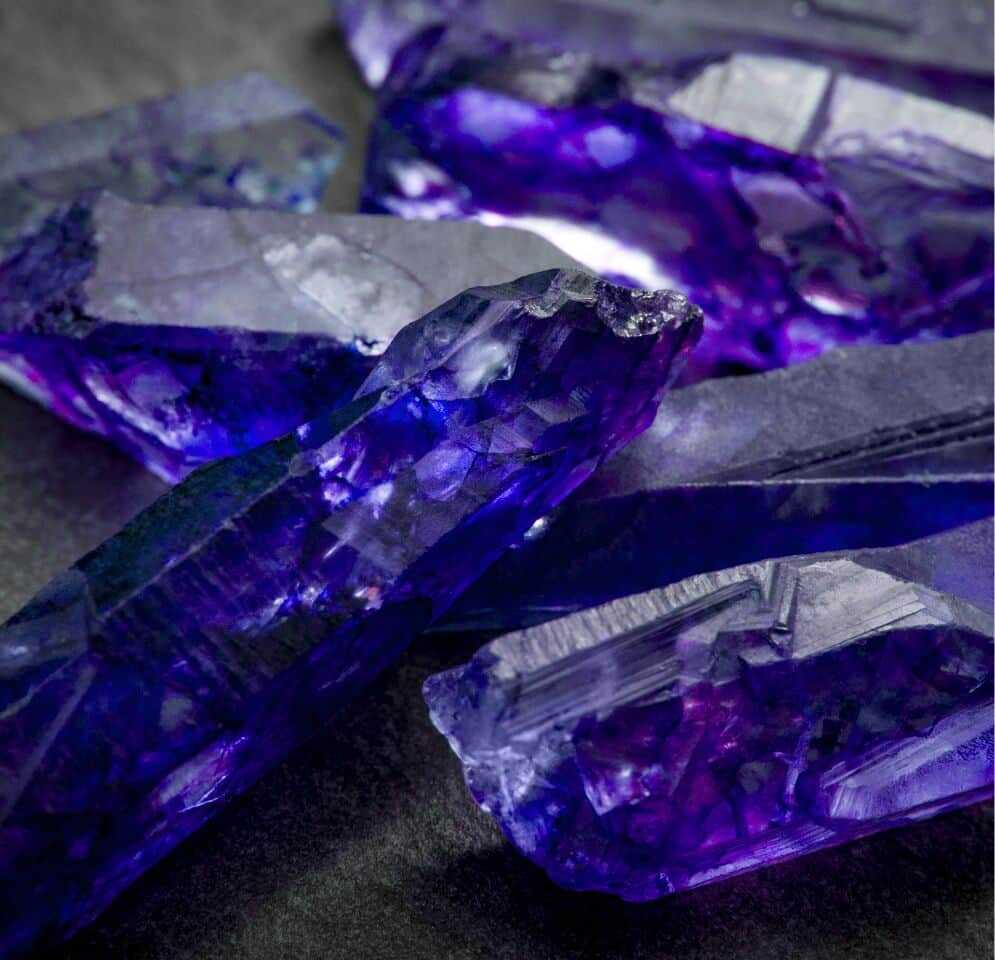
Properties of Tanzanite
Tanzanite carries a wealth of meaning and significance beyond its aesthetic appeal. Its properties range from metaphysical attributes believed to enhance communication and healing, to its esteemed place as a modern December birthstone.
What Does Tanzanite Mean?
Though tanzanite is a recent discovery in the global market, knowledge of the mineral zoisite is traceable to the early 19th century. Gem therapists associate zoisite with improving fertility in men and women by stimulating desire and healing reproductive organs. They also believe that zoisite provides additional protection during pregnancy for unborn children.
Specifically, tanzanite is said to boost the immune system, protecting people from disease by stimulating healing. Like many other blue-color stones, crystal healers are thought to improve communication and sharpen the mind, opening the ability to perceive the greater world around us.*
*For informational purposes only. These remedies, approaches, and techniques are NOT a substitute for professional medical care or treatment. They should not be used to treat any ailment without prior consultation with a qualified healthcare professional.
Who Can Wear Tanzanite?
Blue is a surprising color, its shades shaping our perceptions in remarkable ways. Tanzanite sits in a unique space among gems. Originally, sellers were excited by blue tanzanite, as they thought it would give them a good substitute for sapphire. But, over time, the subtle range of violet-blue has become better known, making tanzanite a desirable gem in its own right.
Blue is one of the most popular colors in the U.S. The mysterious blues and enchanting violets of tanzanite create a mystique that easily intrigues us all. Fortunately, tanzanite crystal covers all of these bases and then some!
The exquisite and deeply saturated colors that have propelled this stone to world renown are perfect for classic and formal attire. A certified and appraised AAA tanzanite ring with an expertly set gem is the ultimate expression of luxury.
While tanzanite is rare and unique, its accessibility is part of its charm. You can find premium tanzanite available in affordable options that include settings of precious sterling silver, often enhanced with a platinum or gold finish.
These selections are great for their contemporary appeal and are a versatile addition to any collection. Tanzanite fashion jewelry is great for both office and casual attire. Use it to effortlessly transition from day to night.

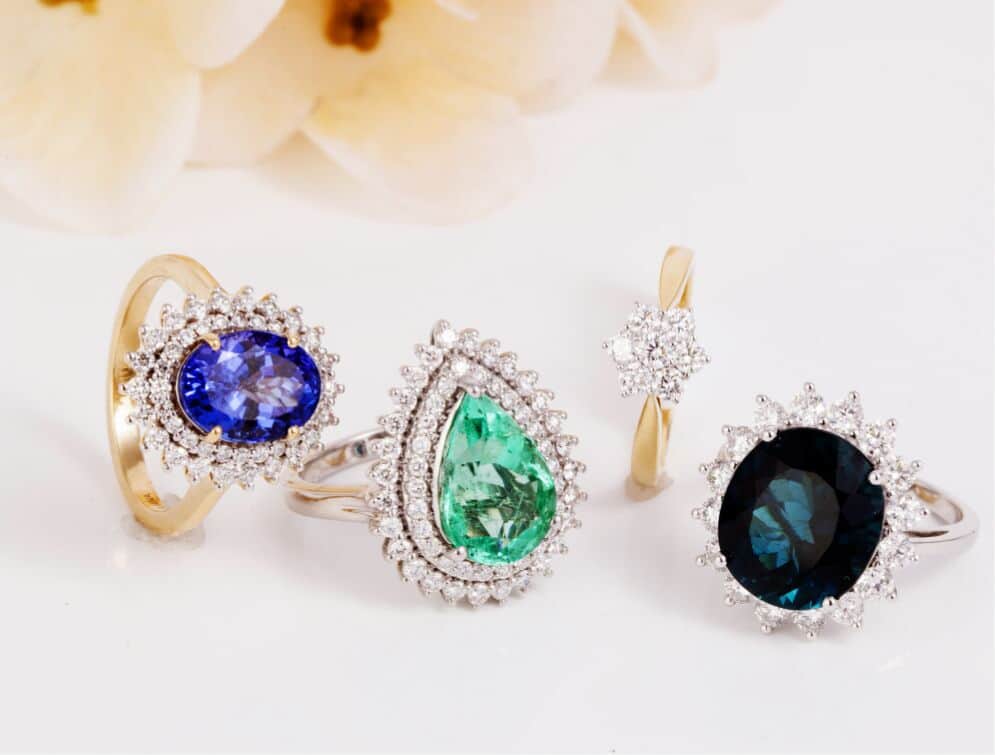
How Does Tanzanite Compare to Other Stones?
There are many blue gemstones available on the market today. Understanding tanzanite’s place among these can guide you to jewelry you’ll treasure in years to come.
Tanzanite was originally mistaken for sapphire, and continues to be compared to the classic blue stone. However, sapphire gems aspire to the coveted cornflower blue hue, as seen in varieties such as Ceylon sapphire, while tanzanite is considered at its best when displaying a transition from blue to violet with flashes of red.
Lighter varieties of tanzanite may be preferable to collectors experienced with aquamarine or sky blue topaz. With their similar light hues, these blue gems are a great way to experiment with the color of tanzanite without diving into the more deeply saturated options. These stones are often daintier and a good choice for those who appreciate minimalistic jewelry and modern designs.
Tanzanite in Jewelry Design
Tanzanite has captivated the attention of jewelry designers and enthusiasts alike. It lends an exotic and vibrant allure to any piece of jewelry it adorns. This gemstone's versatility is showcased through various designs, particularly within the Rhapsody and Iliana collections.

The Rhapsody collection is known for its exquisite craftsmanship and the use of premium tanzanite stones set in luxurious platinum. The designs within this collection are characterized by their elegance and timeless appeal, making them perfect for both everyday wear and special occasions.
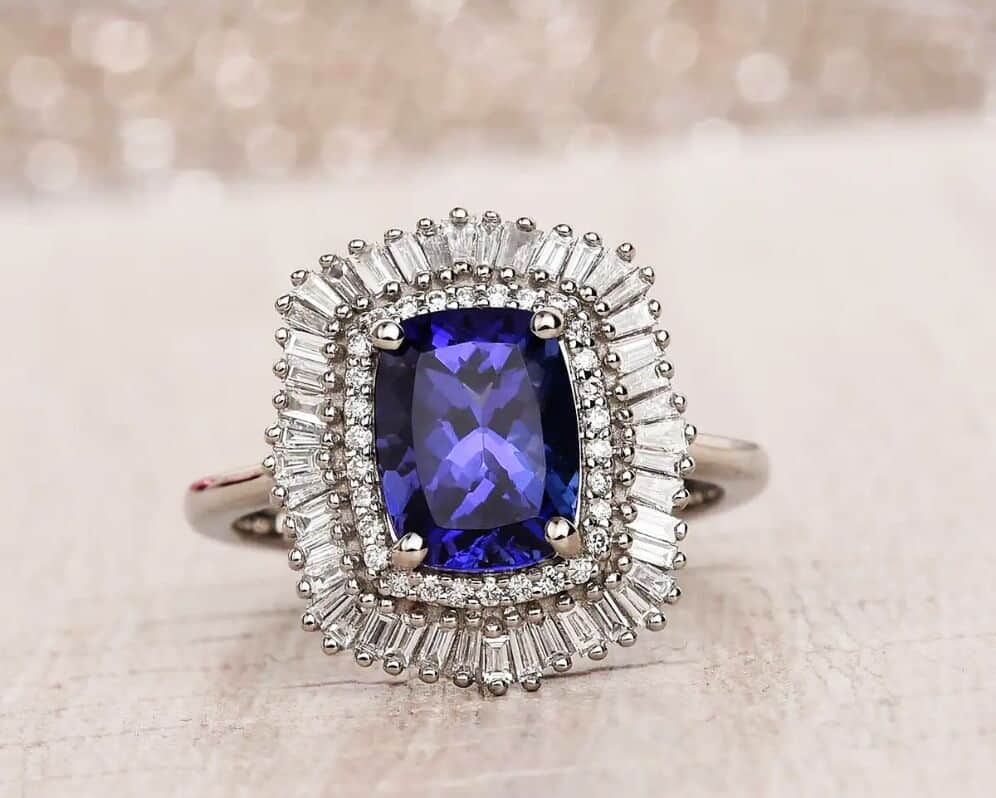 Platinum AAAA Tanzanite and Diamond Ring
Platinum AAAA Tanzanite and Diamond Ring
The tanzanite's deep blue-violet hue is magnificently highlighted by the ring's design, allowing the gemstone to take center stage. Diamond accents add an extra layer of radiance, creating a harmonious balance between the vivid color of tanzanite and the timeless sparkle of diamonds.
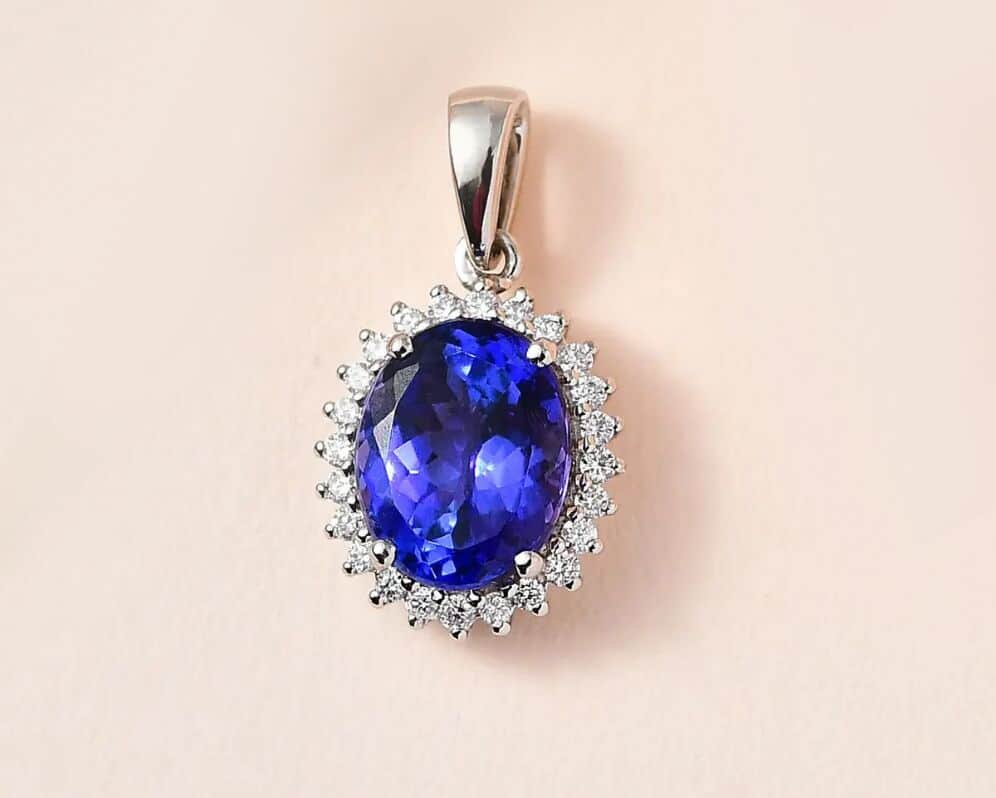 Platinum AAAA Tanzanite and E-F VS Diamond Pendant
Platinum AAAA Tanzanite and E-F VS Diamond Pendant
This pendant’s tanzanite is complemented by E-F color and VS clarity diamonds. It exudes luxury and elegance, with the platinum's luster enhancing the gemstones' visual appeal. The combination of top-grade tanzanite and diamonds makes this pendant a symbol of refined taste and sophistication.

The Iliana collection, on the other hand, is celebrated for its use of 18K gold, which provides a warm contrast to the cool tones of tanzanite. Jewelry pieces within this collection often feature bold, innovative designs that are both modern & chic. The Iliana collection tends to favor larger tanzanite stones, showcasing their exquisite color & clarity.
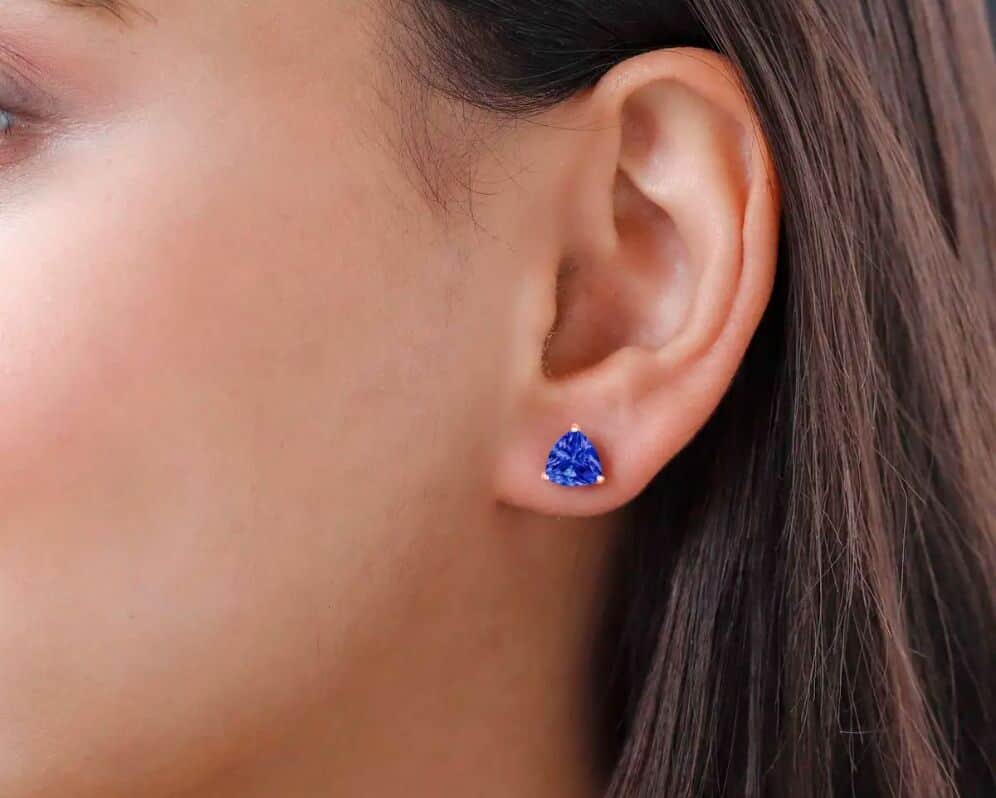 AAA Tanzanite Rose Gold Stud Earrings
AAA Tanzanite Rose Gold Stud EarringsThese solitaire stud earrings feature warm hues of rose gold that perfectly complement the deep violet-blue of the tanzanite. This creates a stunning visual contrast that enhances the gemstone's natural beauty. These earrings are designed to offer a subtle yet captivating presence, making them suitable for both casual and formal wear.
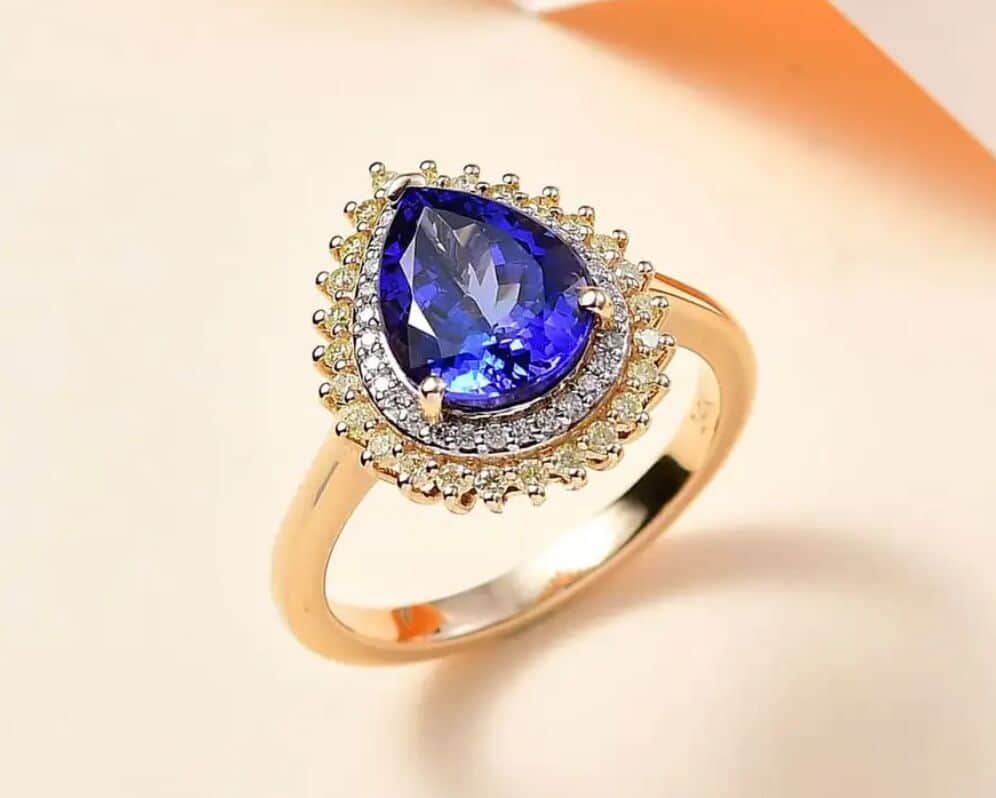 AAA Tanzanite & Diamond Halo Yellow Gold Ring
AAA Tanzanite & Diamond Halo Yellow Gold RingThis stunning ring features a double halo of natural yellow and white diamonds. The contrast between the deep blue-violet of the tanzanite, the brightness of the white diamonds, and the warmth of the yellow diamonds and gold creates a mesmerizing visual effect. This ring exemplifies the Iliana collection's commitment to combining precious materials and meticulous craftsmanship to create jewelry that is both luxurious and wearable.
The Versatility of Tanzanite
Tanzanite's versatility in jewelry design is evident through its compatibility with a variety of metals and settings. Its unique color can complement both cool and warm tones, making it an excellent choice for custom jewelry designs. Whether set in platinum, white, yellow, or rose gold, tanzanite can adapt to the style of the wearer, proving to be a flexible and desirable gemstone for various jewelry pieces.
What’s more, a tanzanite crystal can be cut into a wide range of shapes and sizes, from classic round and oval cuts to more unique marquise, pear, and emerald cuts. This versatility in cutting allows designers to create pieces that are tailored to the individual preferences of the wearer, further showcasing the gemstone's adaptability and appeal in jewelry design.
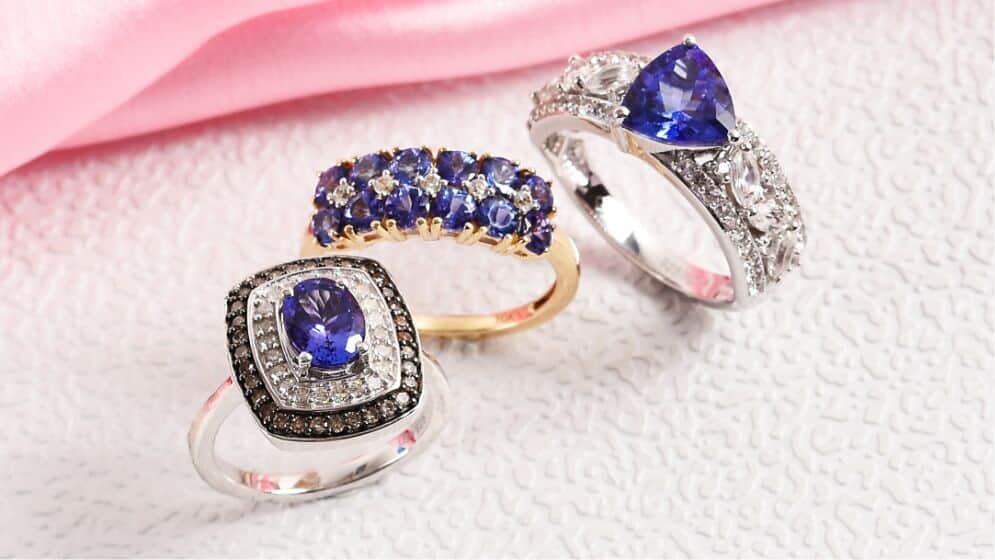
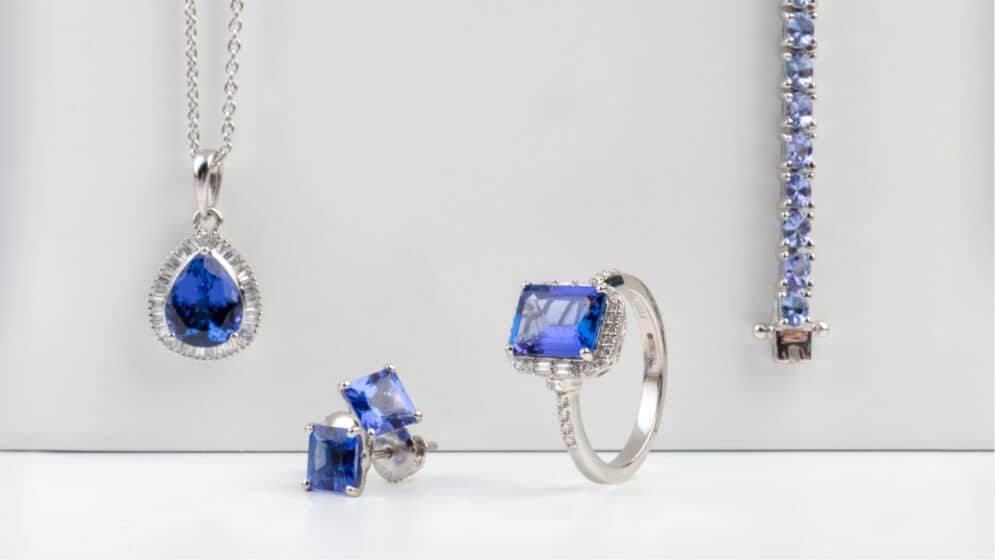
Is Tanzanite a Birthstone?
Tanzanite is one of three modern December birthstones. A relatively recent addition, tanzanite joined the modern birthstone list in 2002. It was the first major change to the modern birthstone list since 1952.
Compared to blue topaz, zircon, and turquoise, a tanzanite birthstone is a perfect gift for someone who prefers a moodier, more mysterious birthstone. Tanzanite is also the traditional gift for the 24th wedding anniversary.
How to Authenticate Tanzanite
Tanzanite's unique allure and rarity make it a coveted gemstone, but ensuring its authenticity is crucial when purchasing or evaluating Tanzanite jewelry. Here's a step-by-step guide to help you authenticate tanzanite:

1. Research and Verification
Begin by researching reputable sources and dealers known for their expertise in tanzanite. Verify the credentials and certifications of the seller to ensure they adhere to industry standards and ethical practices. Stick to retailers known for their commitment to authenticity and transparency in the gemstone trade, such as Shop LC.

2. Color Assessment
Examine the color of the tanzanite carefully. An authentic tanzanite stone typically displays a vivid blue-to-violet hue with flashes of red. Be wary of gems with overly uniform or unnatural colors, as they may indicate treatments or synthetic origins.

3. Clarity Inspection
Assess the clarity of the tanzanite by examining it under magnification. Look for any internal inclusions or blemishes that may affect its transparency and value. Authentic tanzanite often contains natural inclusions, but excessive flaws or irregularities could indicate synthetic or treated stones.

4. Cut Evaluation
Evaluate the cut of the stone to ensure it exhibits optimal brilliance and symmetry. Authentic tanzanite typically has a faceted stone to enhance its color and clarity while maximizing light reflection. Pay attention to the precision of the cut and the quality of the facets, as they can significantly impact the stone's overall appearance.

5. Certification and Documentation
Request a certificate of authenticity or gemological report from a reputable gemological laboratory. These documents provide detailed information about the stone’s characteristics, including its color, clarity, cut, and carat weight. Verify that the certificate matches the stone in question and confirms its natural origin and authenticity.

6. UV Testing
Perform a UV (ultraviolet) light test to further authenticate your gem. Authentic tanzanite typically exhibits a distinctive naturally blue fluorescence under UV light, known as tenebrescence. However, note that the absence of fluorescence does not necessarily indicate synthetic or treated tanzanite, as not all genuine stones fluoresce.

7. Consultation with Experts
When in doubt, seek guidance from experienced gemologists or jewelry appraisers who specialize in tanzanite. They can provide professional insights and expertise to help authenticate the stone and ensure that it is not an imitation.
Be aware of the most common tanzanite imitations in the market, such as colored glass, cubic zirconia, or synthetic forsterite. Understanding these can help buyers recognize genuine tanzanite and avoid costly mistakes.

Tanzanite FAQ'S
Q. Can tanzanite be worn in everyday jewelry, or is it better suited for special occasions?
A. Tanzanite can be worn in everyday jewelry, but it's essential to handle it with care to avoid damage. Many people choose to wear tanzanite for both casual and formal occasions due to its versatility.
Q. Can tanzanite change color over time or with exposure to light?
A. Tanzanite can exhibit pleochroism, meaning it may display different colors when viewed from different angles. However, it does not typically change color over time or with exposure to light.
Q. Can tanzanite be passed down as an heirloom?
A. Yes, tanzanite can be passed down as an heirloom. Its durability and timeless beauty make it a meaningful and cherished piece of jewelry that can be enjoyed for generations to come.
Q. Can tanzanite be found in jewelry pieces other than rings and earrings?
A. Yes, tanzanite can be incorporated into various types of jewelry, including necklaces, bracelets, brooches, and even men's accessories like cufflinks. Its versatility allows for creative and unique jewelry designs.
Q. What distinguishes an emerald-cut tanzanite from other cuts?
A. An emerald-cut tanzanite features rectangular facets and trimmed corners, accentuating the gemstone's clarity and color. This cut offers a sleek and elegant appearance, showcasing the gem’s vibrant violet hues.
Q. Are tanzanite and ruby crystals similar?
A. While tanzanite and ruby are both prized gemstones, they belong to different mineral families and exhibit distinct characteristics. Tanzanite, a variety of zoisite, boasts vibrant violet hues, while ruby, a variety of corundum, displays intense red tones.
Q. What should I look for when buying tanzanite online?
A. Buy from reputable sellers with a track record of selling genuine gemstones. Look for detailed descriptions, high-quality images, and certificates of authenticity to ensure you're getting genuine tanzanite.
